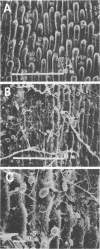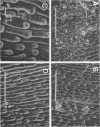Abstract
The effects of acid on the microbial decomposition of the dominant aquatic macrophyte (Carex sp.) in Toolik Lake, Alaska were studied in microcosms during the ice-free season of 1980. Toolik Lake is slightly buffered, deep, and very oligotrophic. Microbial activities, as determined by 14C-acetate incorporation into extractable lipids, associated with Carex litter were significantly (P < 0.01) reduced within 2 days at pHs of 3.0 and 4.0, but not 5.0, 5.5, or 6.0, as compared with ambient controls (pH 7.4). ATP levels were significantly reduced at pH 3.0, but not at the other pHs tested. After 18 days, microbial activity significantly correlated with weight loss (P < 0.05), nitrogen content (P < 0.01), and C/N ratios (P < 0.01) of the litter, but did not correlate with ATP levels. Scanning electron microscopy of the litter surface revealed that the fungi present at ambient pH did not become dominant at pHs below 5.5, diatoms were absent below pH 4.0, and bacterial numbers and extracellular slime were greatly reduced at pH 4.0 and below. Mineralization of Carex14C-lignin-labeled or 14C-cellulose-labeled lignocellulose was reduced at pH 2.0, but not at pH 4.0, 5.0, or 6.0, compared with controls (pH 7). We concluded that if the pH of the water from this slightly buffered lake was sufficiently reduced, rates of litter decomposition would be significantly reduced.
Full text
PDF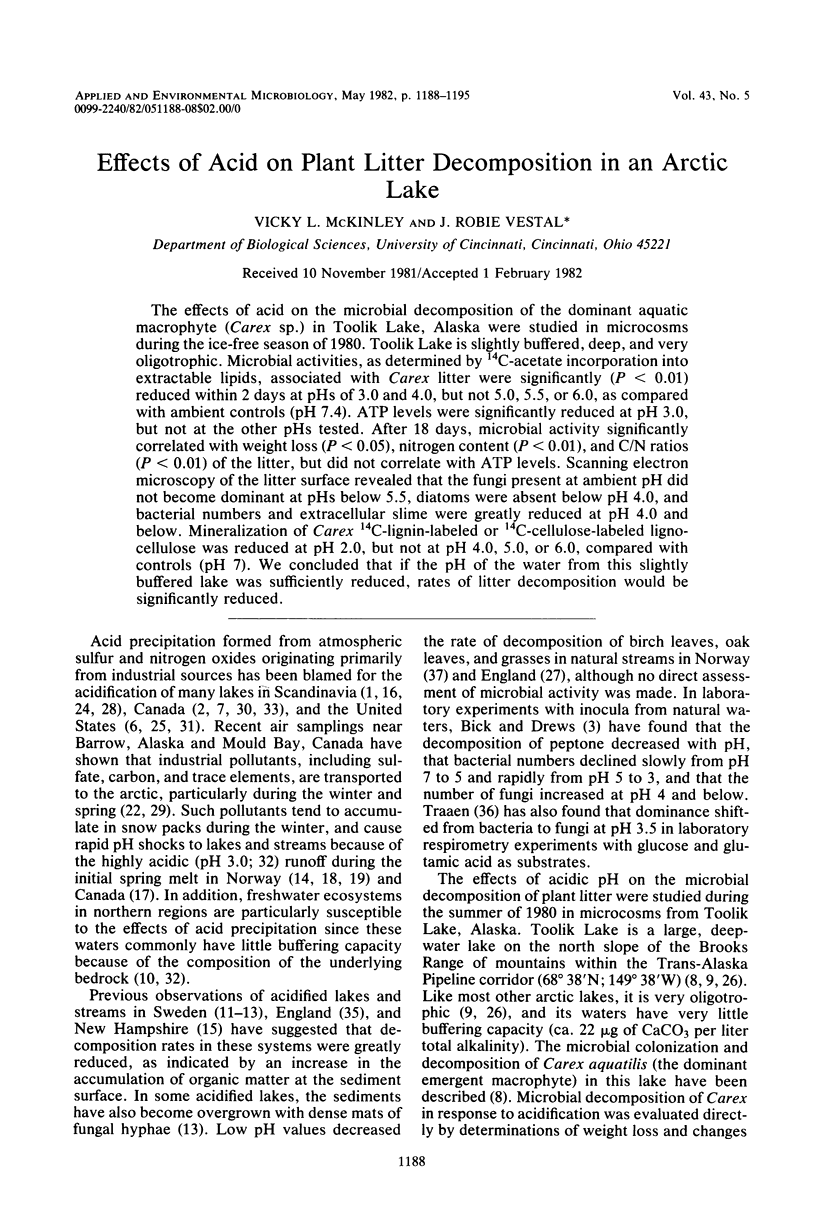
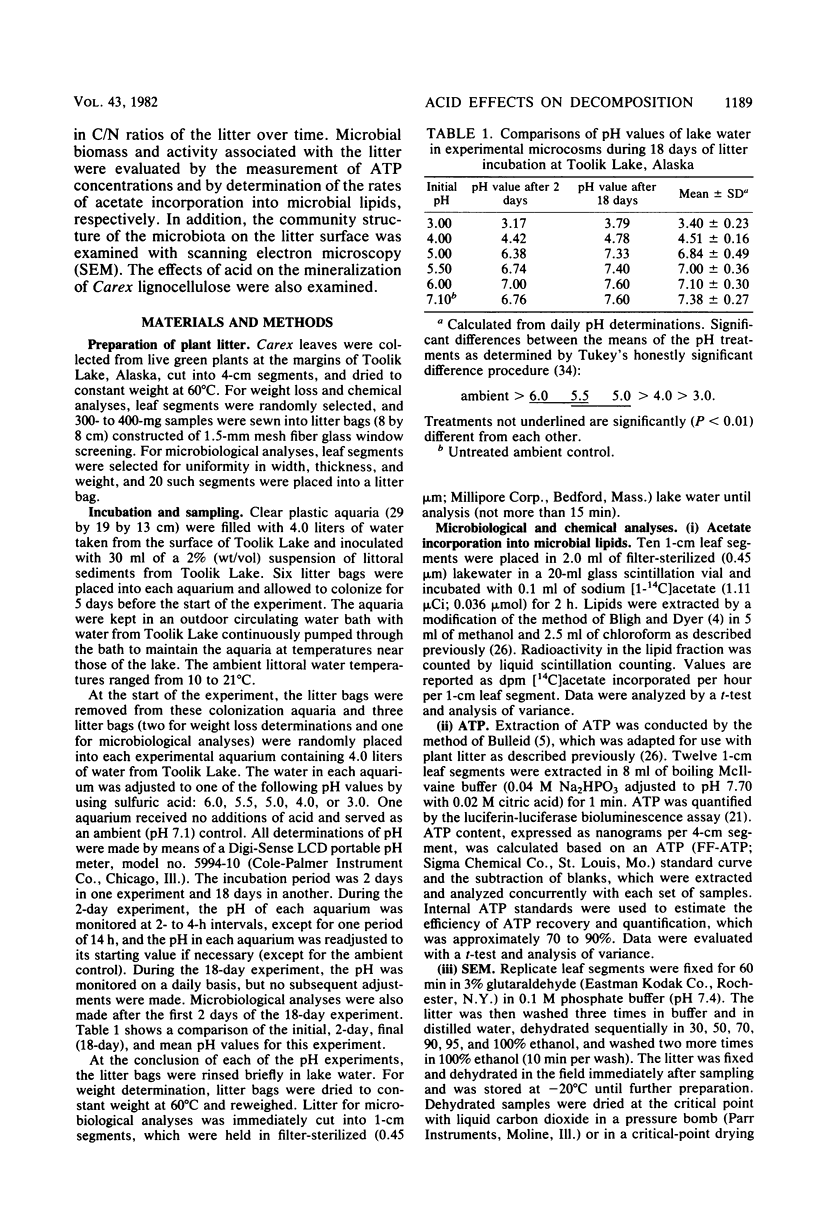
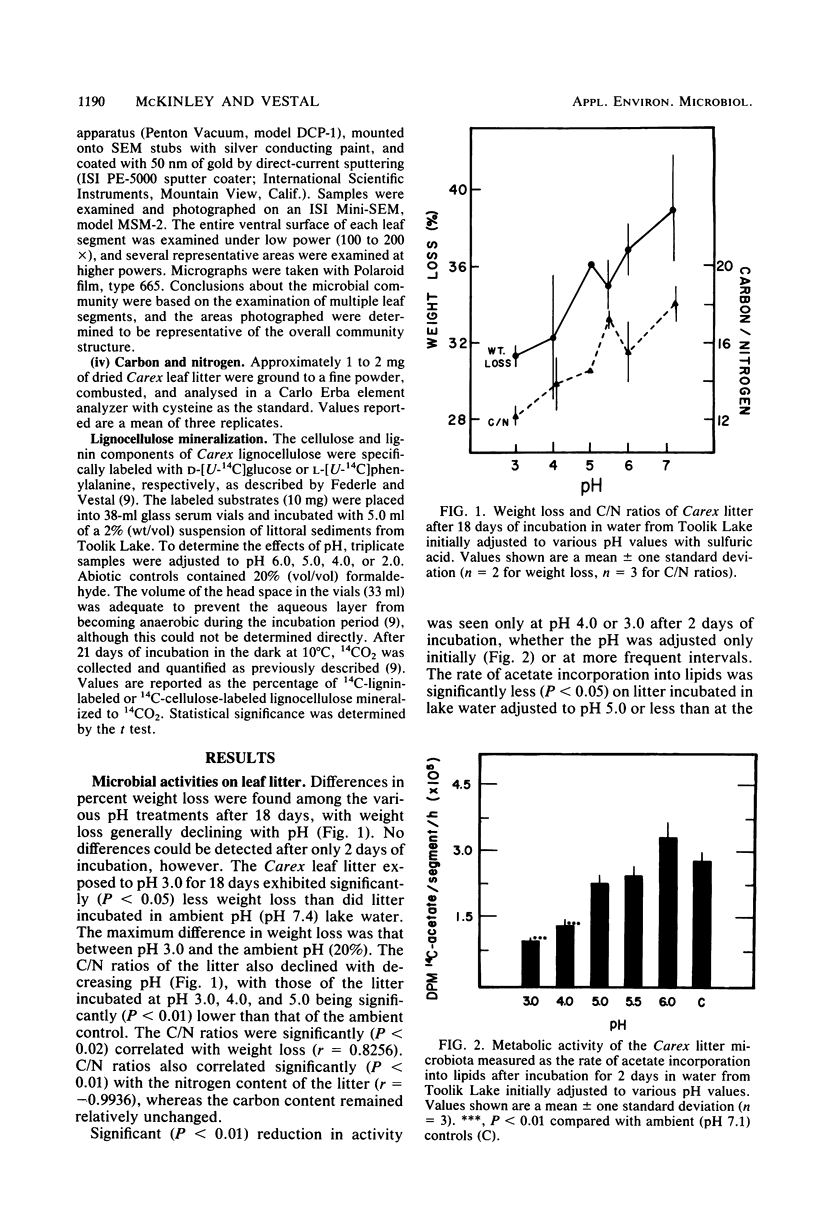
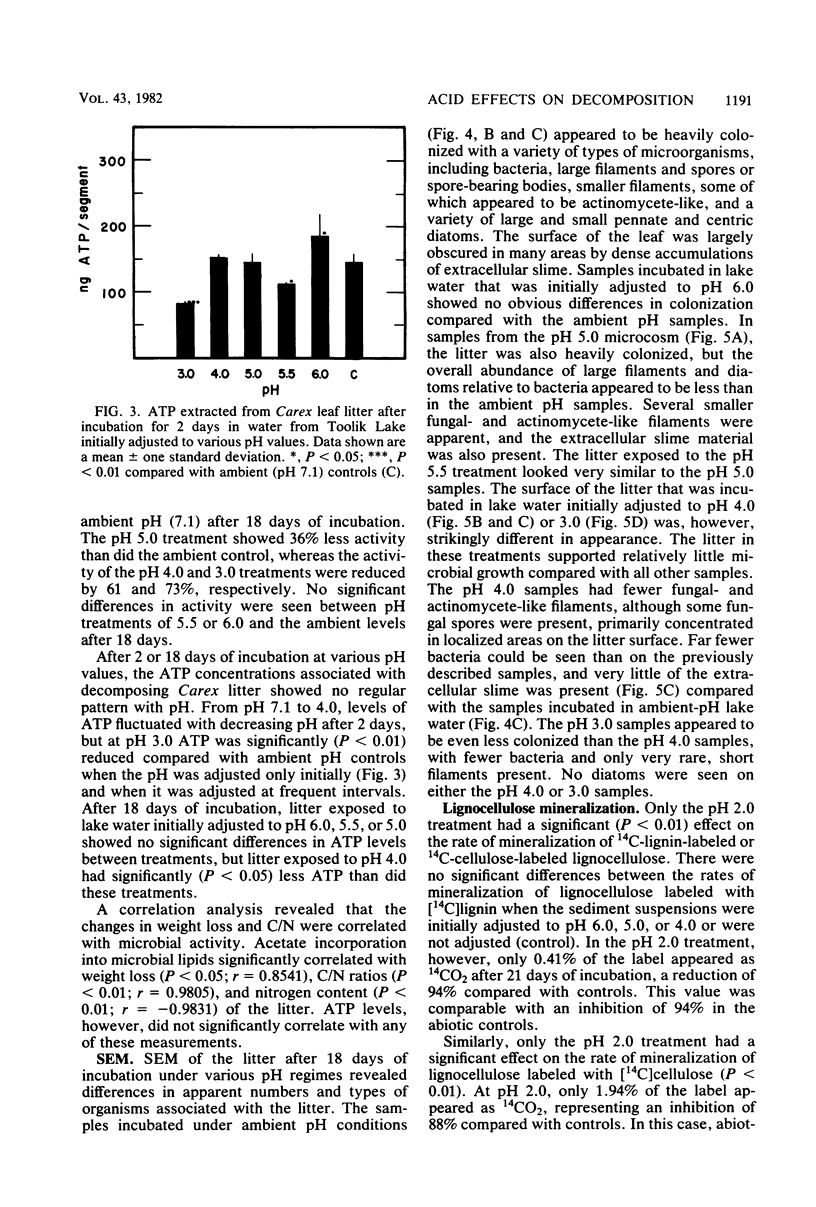
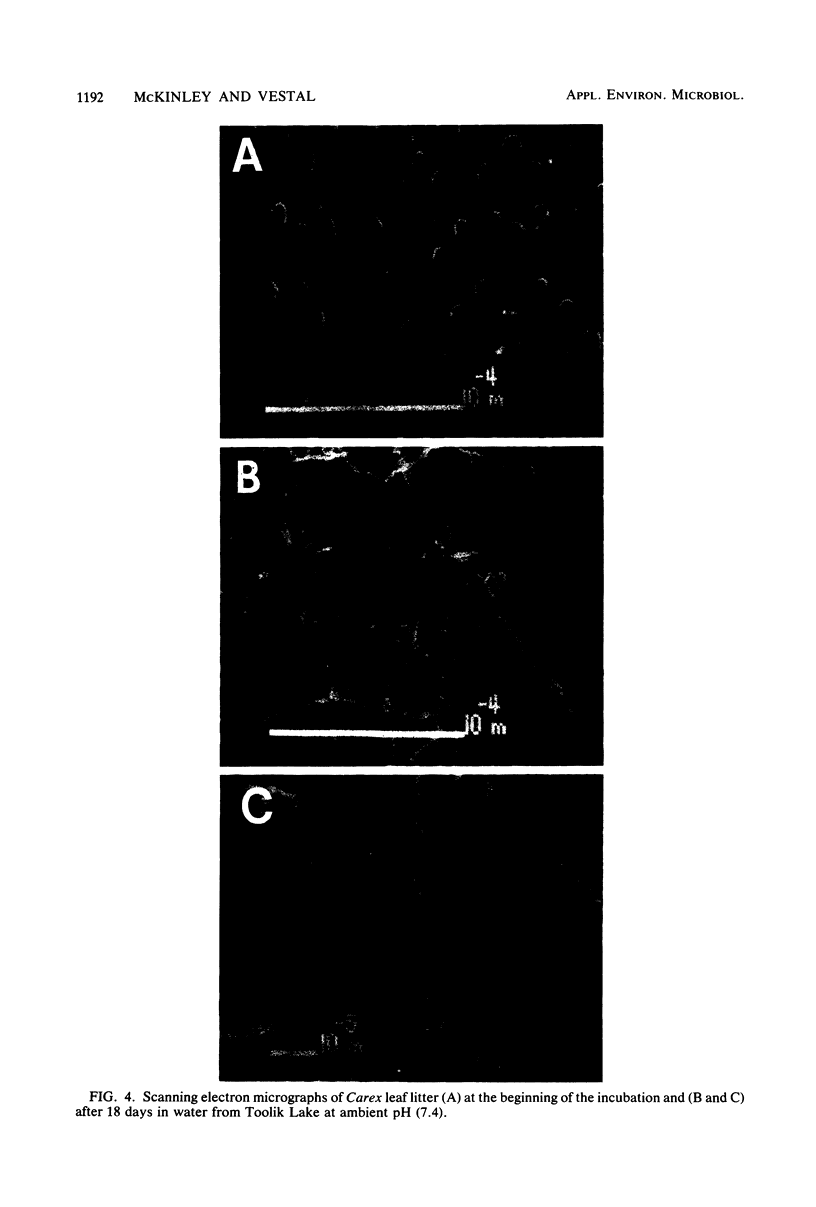
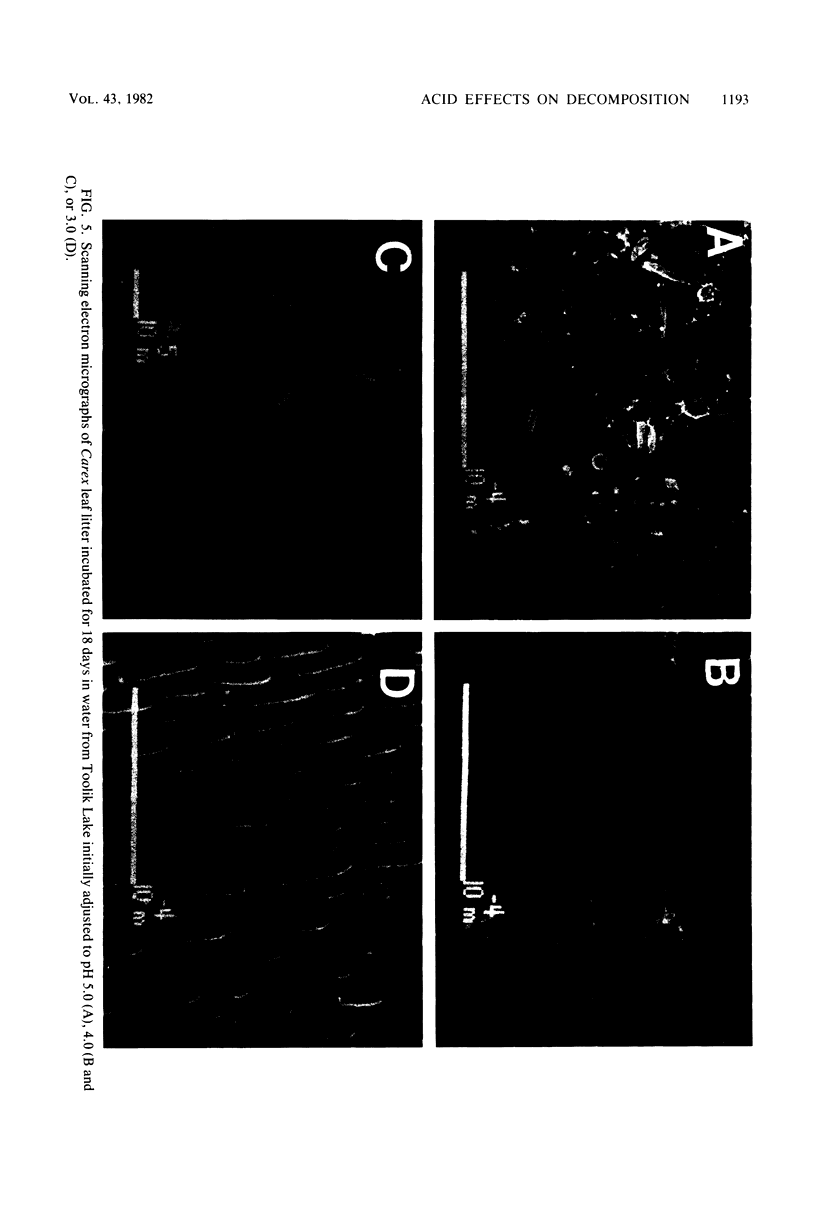
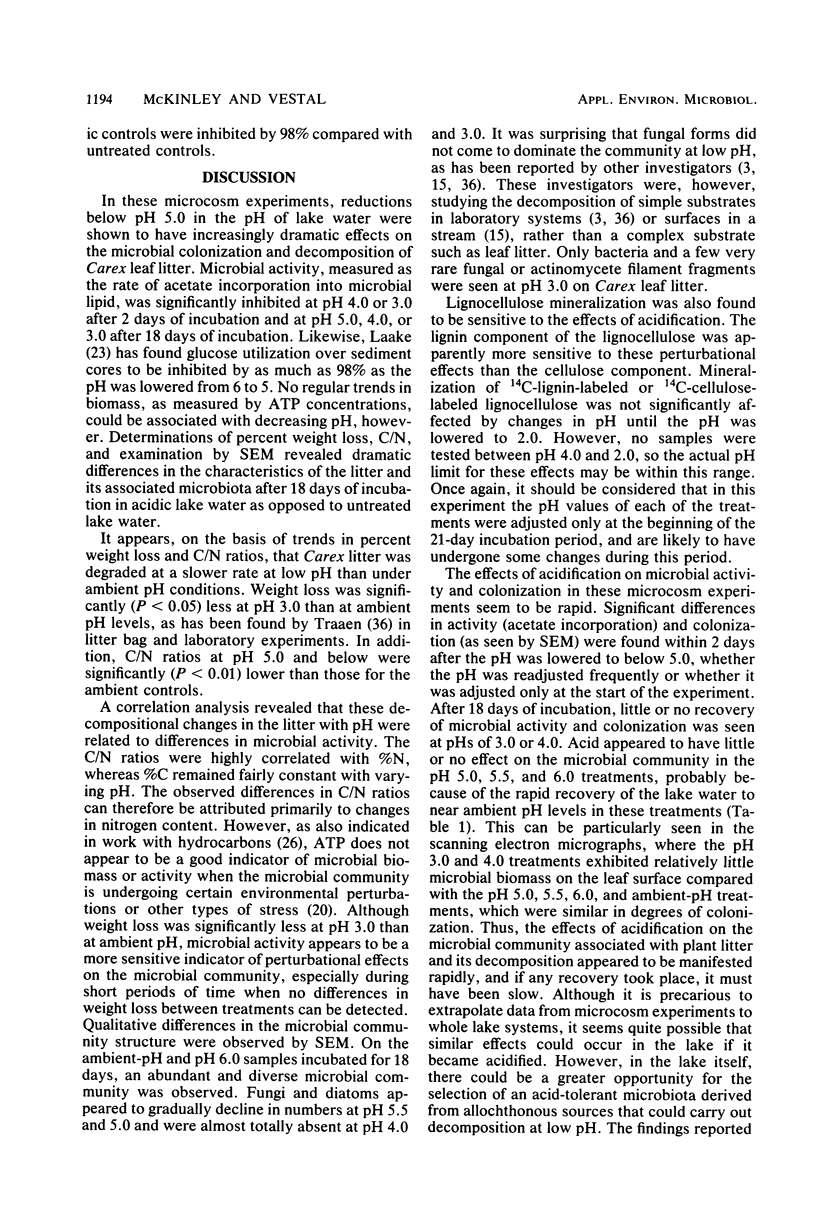
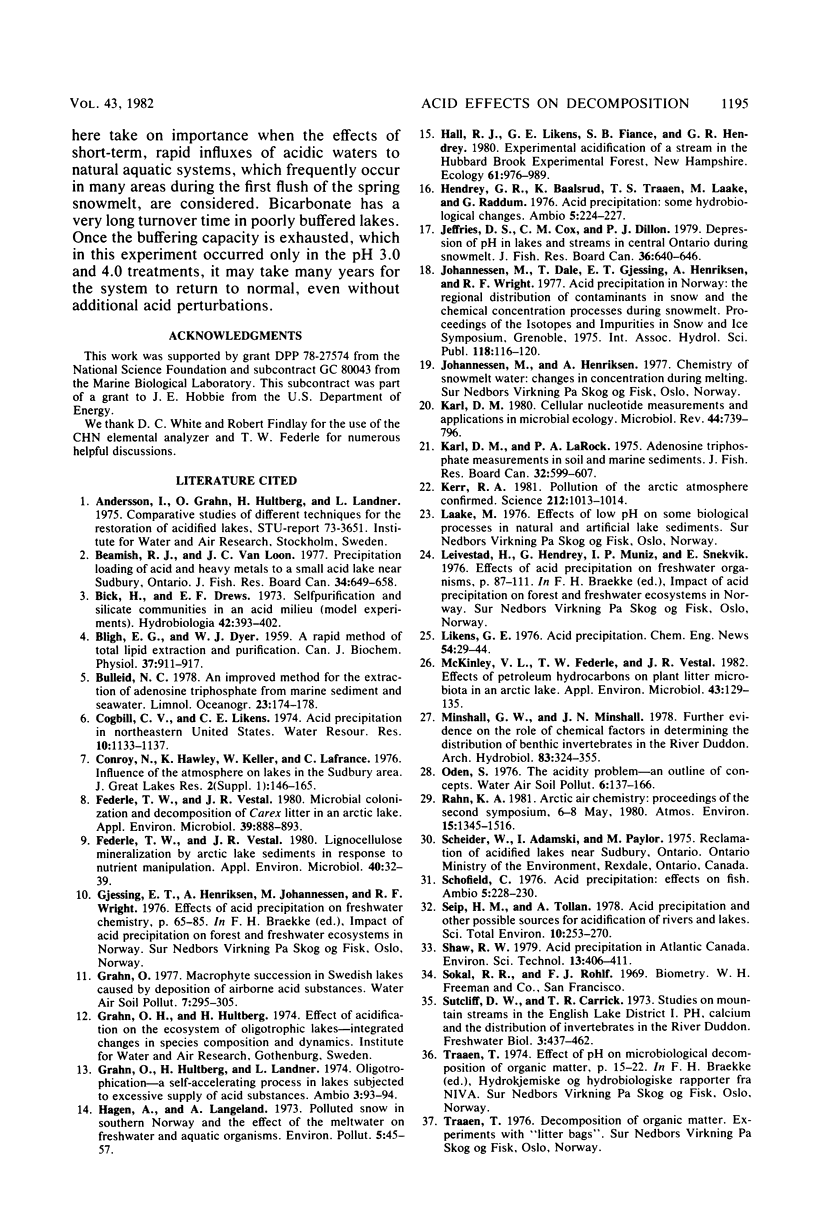
Images in this article
Selected References
These references are in PubMed. This may not be the complete list of references from this article.
- BLIGH E. G., DYER W. J. A rapid method of total lipid extraction and purification. Can J Biochem Physiol. 1959 Aug;37(8):911–917. doi: 10.1139/o59-099. [DOI] [PubMed] [Google Scholar]
- Federle T. W., Vestal J. R. Lignocellulose mineralization by arctic lake sediments in response to nutrient manipulation. Appl Environ Microbiol. 1980 Jul;40(1):32–39. doi: 10.1128/aem.40.1.32-39.1980. [DOI] [PMC free article] [PubMed] [Google Scholar]
- Federle T. W., Vestal J. R. Microbial colonization and decomposition of carex litter in an arctic lake. Appl Environ Microbiol. 1980 Apr;39(4):888–893. doi: 10.1128/aem.39.4.888-893.1980. [DOI] [PMC free article] [PubMed] [Google Scholar]
- Karl D. M. Cellular nucleotide measurements and applications in microbial ecology. Microbiol Rev. 1980 Dec;44(4):739–796. doi: 10.1128/mr.44.4.739-796.1980. [DOI] [PMC free article] [PubMed] [Google Scholar]
- Kerr R. A. Pollution of the arctic atmosphere confirmed. Science. 1981 May 29;212(4498):1013–1014. doi: 10.1126/science.212.4498.1013. [DOI] [PubMed] [Google Scholar]
- McKinley V. L., Federle T. W., Vestal J. R. Effects of petroleum hydrocarbons on plant litter microbiota in an arctic lake. Appl Environ Microbiol. 1982 Jan;43(1):129–135. doi: 10.1128/aem.43.1.129-135.1982. [DOI] [PMC free article] [PubMed] [Google Scholar]



